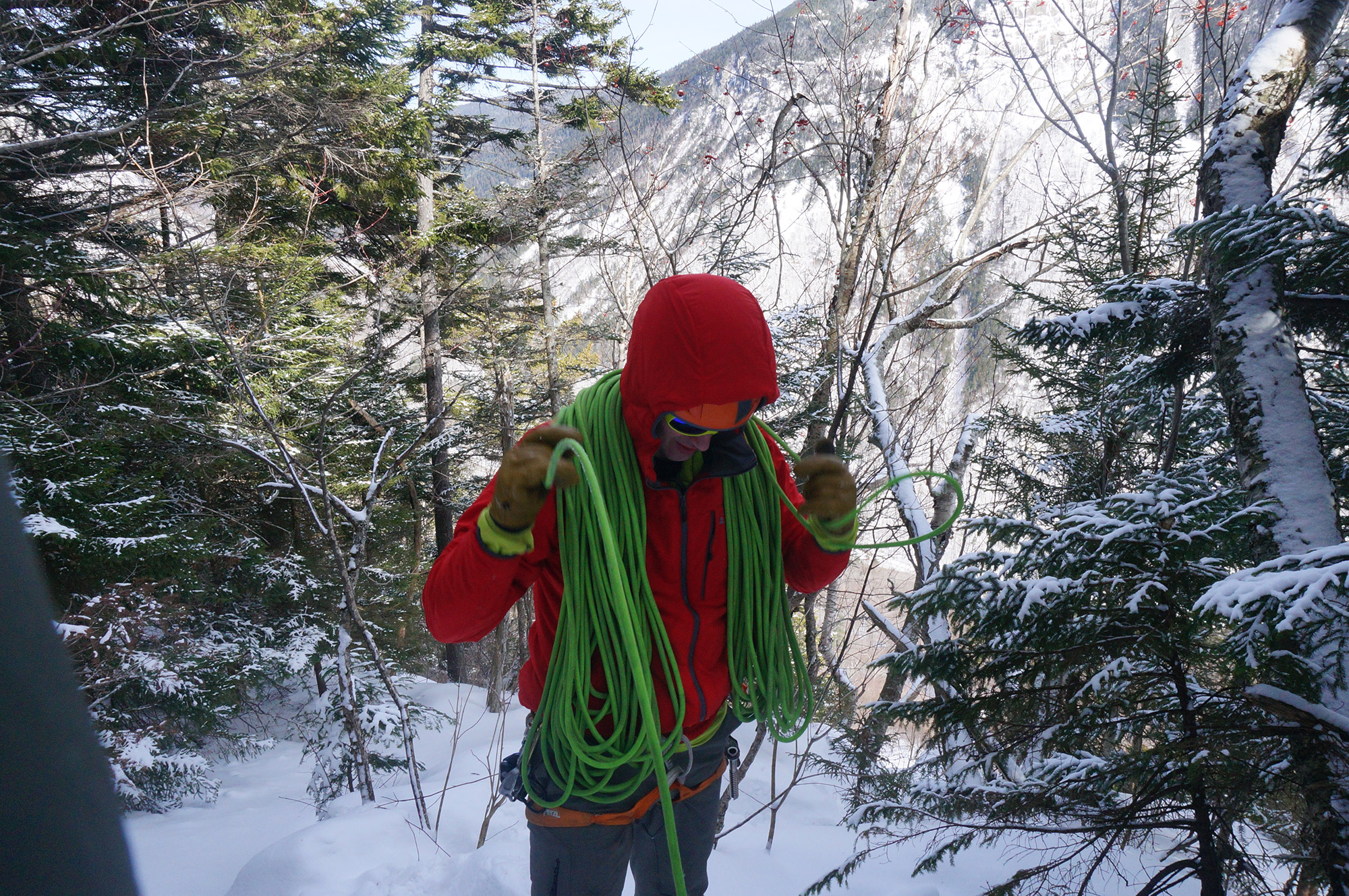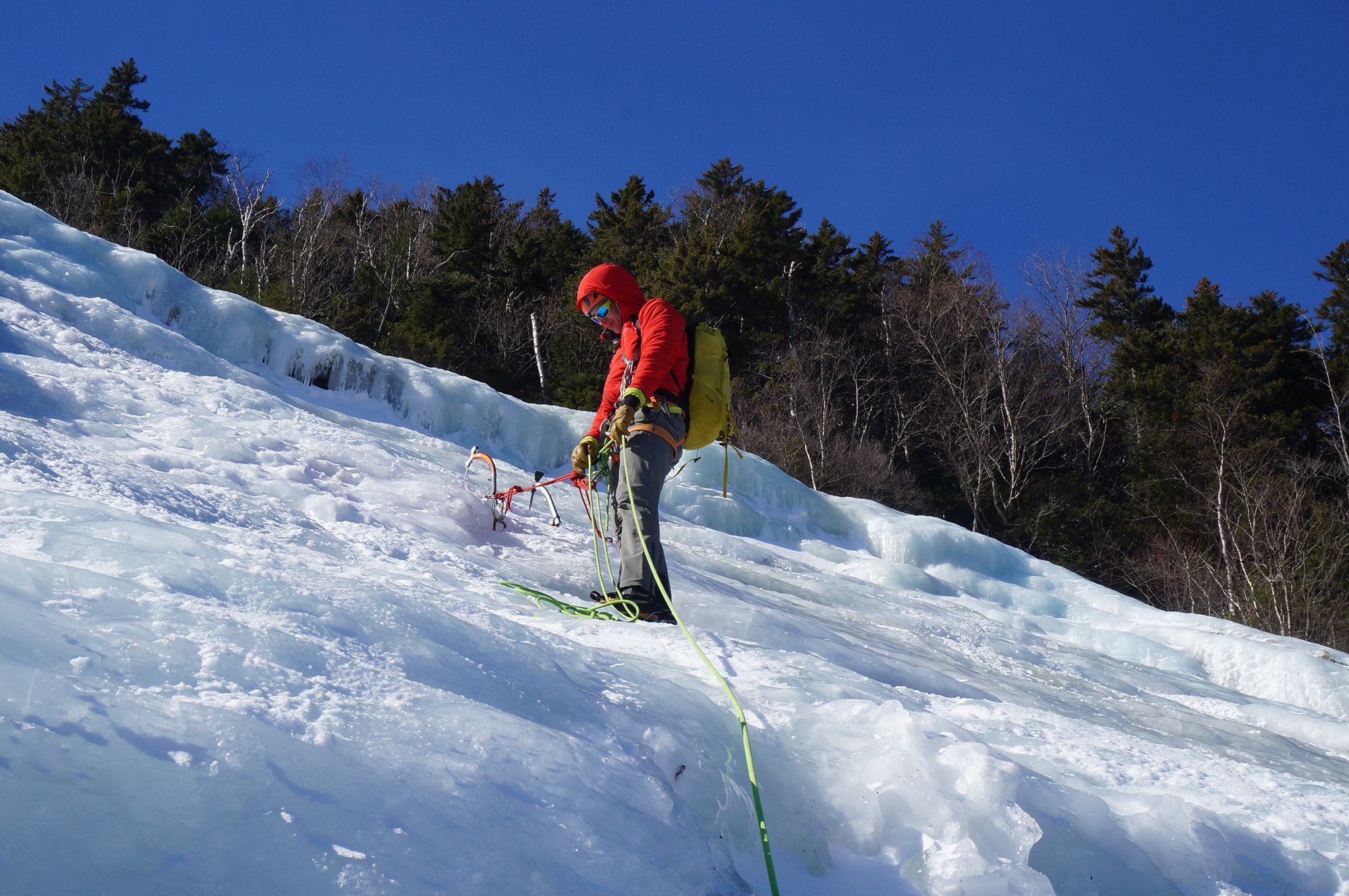You might think that creating an article for goEast is as simple as sitting in front of a computer and writing about your favorite trip, piece of gear, or outdoor activity. However, the reality is, for most articles, you spend just as much time outside taking photos, recording GPS tracks, and refreshing your memory of a trail’s nuances. With deadlines looming this winter, we’ve often had to take trips in typical Northeast winter conditions—think cold temperatures, high winds, and snowy weather. It’s here that we’ve come to appreciate the EMS Alpine Ascender Stretch.
The Ascender’s versatility managed to give us a good time up and down this ultra-classic route.
On a recent reconnaissance trip up Mount Washington via the Winter Lion Head Trail, the Ascender proved its merits. There, we made frequent stops—in spite of the winds gusting up to 100 mph—to gather waypoints and shoot photos for an upcoming article. Layered under our hard shells while we were above treeline, the Ascender performed equally well when we dashed across the Alpine Garden as it did while we stopped for photos. Throughout, it breathed on the move and insulated when we stopped, thanks to its Polartec Alpha insulation. Overall, the Ascender’s versatility managed to give us a good time up and down this ultra-classic route—always a concern during the short days of winter. In part, this was due to not having to dig around our packs for a puffy every time we stopped.

A recent ice climbing trip in Crawford Notch further highlighted this go-to layer’s value. Ice climbing’s mechanics involve working hard and getting warm while climbing, only to stop and freeze at the belay. The misery builds up if you’re pausing here to take notes or photos for an upcoming article, like we were. The Ascender proved its versatility once again, however. That day, we wore it as our outer layer and found that it breathed while on the go and still kept us warm when we stopped. As well, the insulated hood fits well over a climbing helmet. We also appreciated the large internal pockets for stashing a notebook, camera, snack, and gloves.
These days, it seems every innovation gets labeled “game-changing.” But, the EMS Alpine Ascender truly is the next step forward.
The Ascender looks and functions like a traditional puffy coat, making it easy to pigeonhole. But, we’ve discovered that it’s so much more. In fact, this winter, we’ve used the Ascender just as much as a traditional midlayer as we have as a lightweight belay jacket. Accentuating that, the Ascender is much warmer and more packable than a traditional fleece midlayer, and you can still wear it like a standard soft shell.

These days, it seems every innovation gets labeled “game-changing.” But, the EMS Alpine Ascender truly is the next step forward. Particularly, its overall construction increases the functionality of an essential layering piece.
Over the past year, we’ve tinkered a lot with active insulation. With the Ascender, we’ve been trying to find the perfect application for it within our layering strategies. At the end of it all, we’ve concluded that it will be either on our bodies or in our packs on most trips. Whether you’re freezing on the ski lift and then shredding downhill, working hard while ice climbing and cooling off while belaying, or doing any other activity that involves varying exertion levels in cold environments, the Ascender should be a key part of your layering system.
Tim Peck and Doug Martland
Tim and Doug met long ago at the Eastern Mountain Sports in Canton, Massachusetts. Bonding over a love of slick Quincy Quarry granite, White Mountain sufferfests, and scheming up adventures while folding tee-shirts, today Tim and Doug collaborate to write about their favorite outdoor activities and occasionally get nostalgic about tee-shirt tables.




